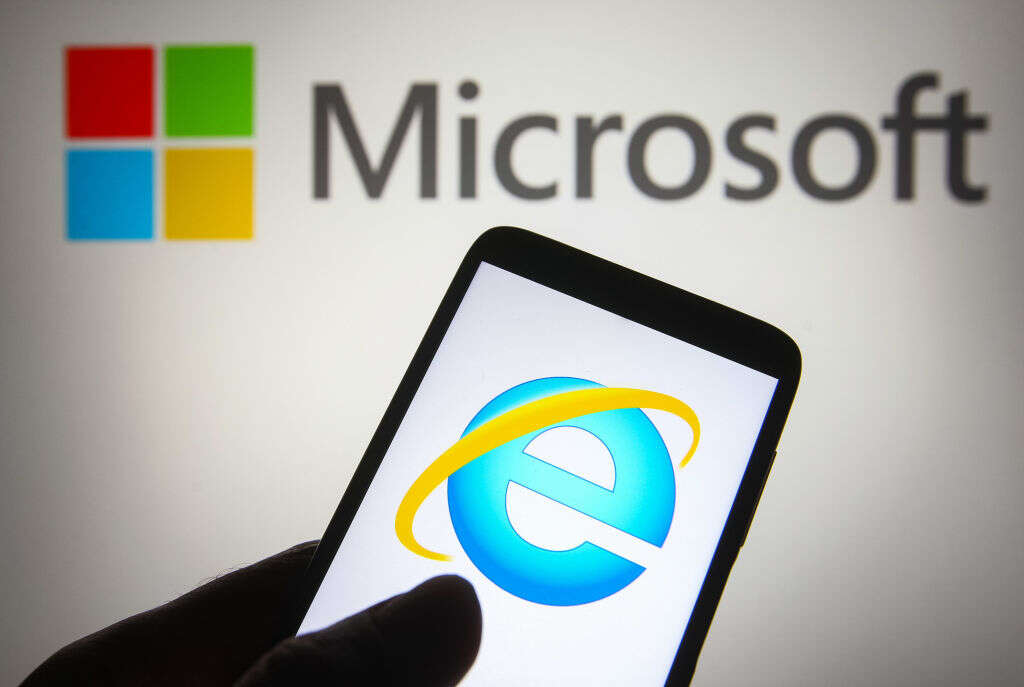
The Internet Explorer 11 (IE11) desktop application has reached its end of life and has been discontinued by Microsoft on certain versions of Windows 10. The web browser is no longer be supported by the tech giant and businesses and IT departments have been urged to migrate their environments, systems and websites over to Microsoft Edge or another browser.
If they haven’t already, companies need to identify any IE-dependent sites, with Microsoft’s Eric Van Aelstyn, product manager for the Edge browser, saying: “We know that waiting for something to happen can be stressful, especially with complex IT environments.”

But how can IE11’s end-of-life affect businesses? Google Chrome has a 64% market share for global desktop browser, compared with IE11’s share of 0.32%, so in comparison it isn’t a popular browser. However, many legacy apps and websites still rely on IE11 and have yet to migrate over to Edge.
A study by IT asset management provider Lansweeper found that 47% of Windows 10 PCs currently in use by organisations have versions of the operating system that are affected by the retirement of Internet Explorer.
What is replacing IE11 after end of life?
Now, users who open the IE11 desktop application will be redirected to Microsoft Edge. However, there is still something akin to end of life support for Internet Explorer 11: The latest Microsoft web browser has an IE mode; a built-in compatibility for legacy IE-based sites and apps.
This mode should mitigate any issues for legacy websites and apps, however Microsoft has warned that some aspects might not run the same.
On Windows 10, following an update, the desktop application is unavailable to end-users. Previous operating systems will not be affected by this update. Windows 11 does not have IE11 as a browser.
Microsoft has confirmed that it will stop supporting IE Mode for Edge by 2029.
In a blog post from May 2021, Sean Lyndersay, general manager, Microsoft Edge Enterprise, wrote that the future of web browsing on Windows 10 would be Microsoft Edge.
"Over the past year, you may have noticed our movement away from Internet Explorer (“IE”) support, such as an announcement of the end of IE support by Microsoft 365 online services. Today, we are at the next stage of that journey: we are announcing that the future of Internet Explorer on Windows 10 is in Microsoft Edge."
How will the IE11 end of life affect businesses?
Some businesses might use legacy apps or website that are only compatible with IE11. While Edge has an IE mode, these apps and sites might not work as expected.
An example is the BACS payment scheme, used by businesses to send and take payments. Edward Taylor, managing of Interbacs, a payments software vendor, explains that the BACS system has relied on IE to provide "full functionality of its website and application for many years". However, due to IE11 retiring, BACS has put measures in place to allow the functionality of their website and applications through other means.
"Any company in the UK that uses the BACS service by any means could be affected by this," explains Taylor. "The BACS service is used for a wide range of payment means, whether that be payroll, supplier payments, regular direct debit collections for things like memberships or monthly payments relating to a contract."
Because of this, Taylor says that all businesses in the UK should be taking note of the changes and making sure they are configuring their systems accordingly. Not doing so could risk payment errors: "There is a high chance that a company will use the BACS service in at least one aspect of the businesses financial processing," he says.
This is not only a risk in terms of financial loss, there is also potential reputational damage and security risks for anyone who does not adhere to these changes.
How should companies migrate their systems to Edge?
Microsoft has provided a guide for businesses and developers to make the transition to Edge.
For IT departments, admins can implement a "disable IE policy" for their business environment. This will ensure that people cannot use the standalone IE 11 browser and that any IE-compatible websites will be accessed in Edge using IE mode.
"We recommend testing as thoroughly as you can with pilot groups of users—including deploying the Disable IE policy to those users – prior to your broader internal retirement/disablement activities. This is the best time to address any compatibility issues you may encounter," says Microsoft about the migration.
Developers can also redirect end-users to Edge if they are using the unsupported IE11 app, says the tech giant.
"To minimise disruptions, Microsoft Edge supports a new capability that automatically redirects users," it says on its Microsoft Build website. "When an Internet Explorer user goes to a website that's incompatible with Internet Explorer, Windows can automatically redirect the user to Microsoft Edge. Only websites that are part of the Need Microsoft Edge list will be redirected."






